Art and Loathing in Miami
Take a break from the snow and head to sunny Florida, by way of artist Sean Smuda's day-by-day diary of the recent goings-on at the must-see contemporary art festival of the year, Art Basel in Miami.

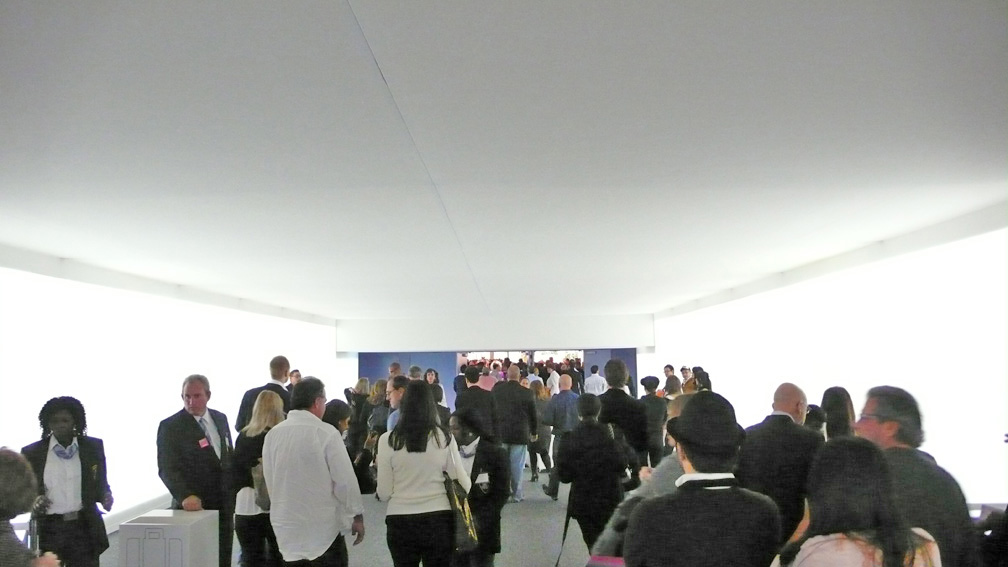
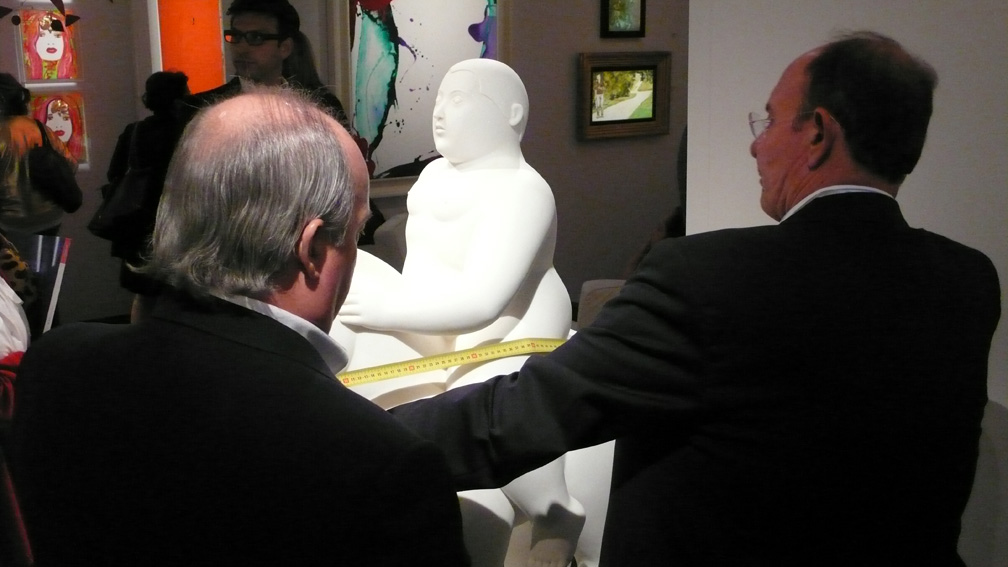
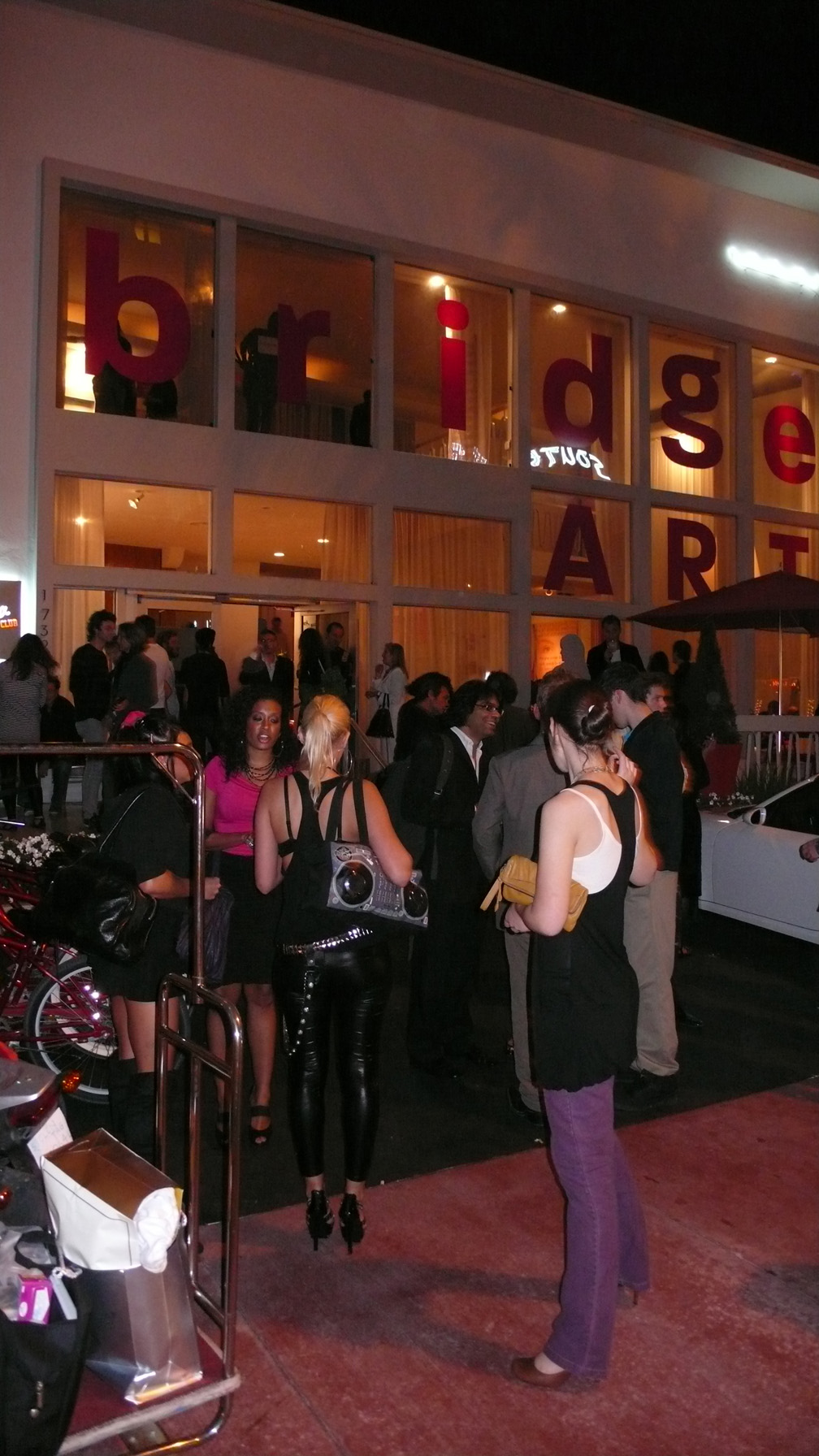
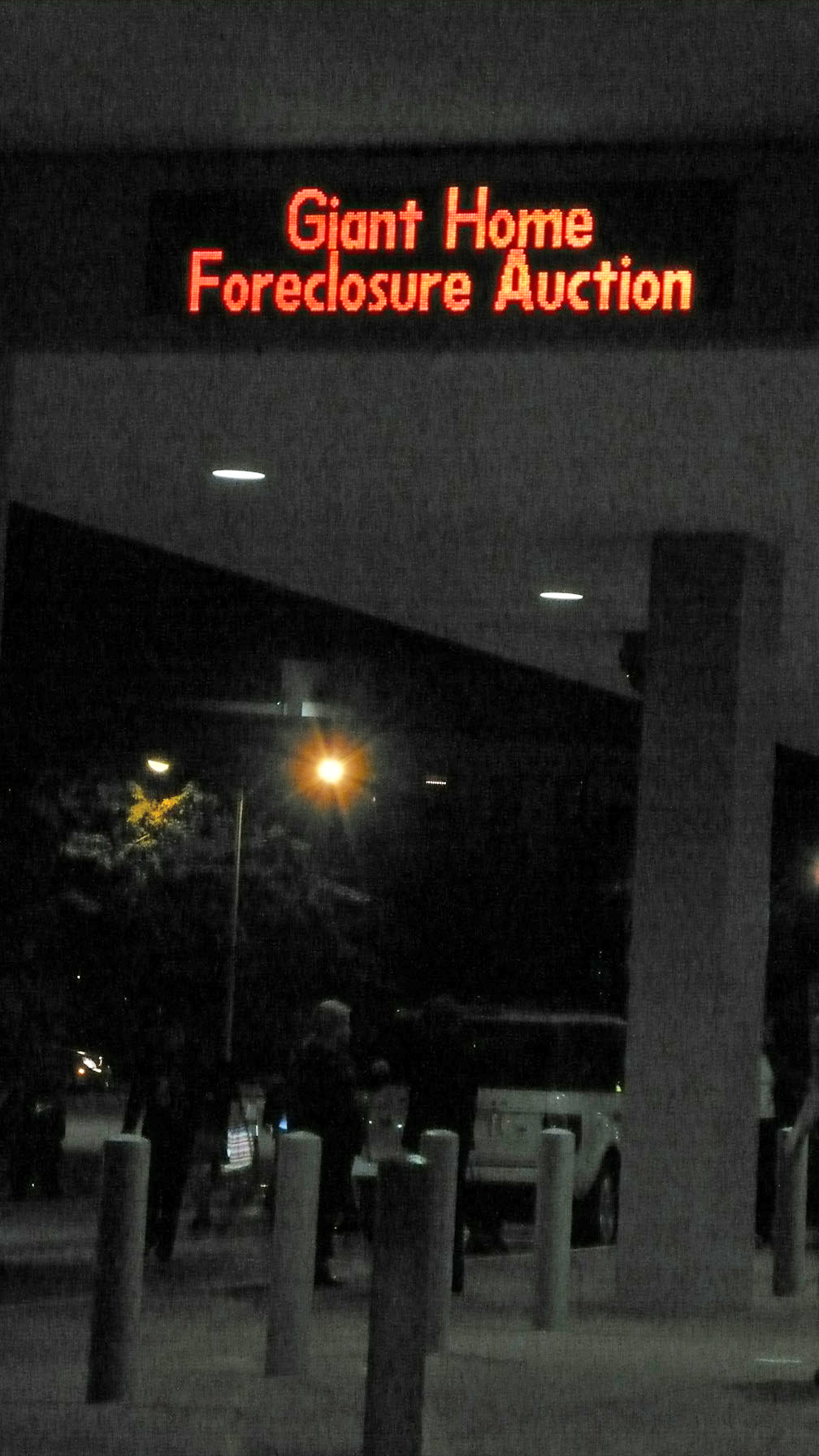
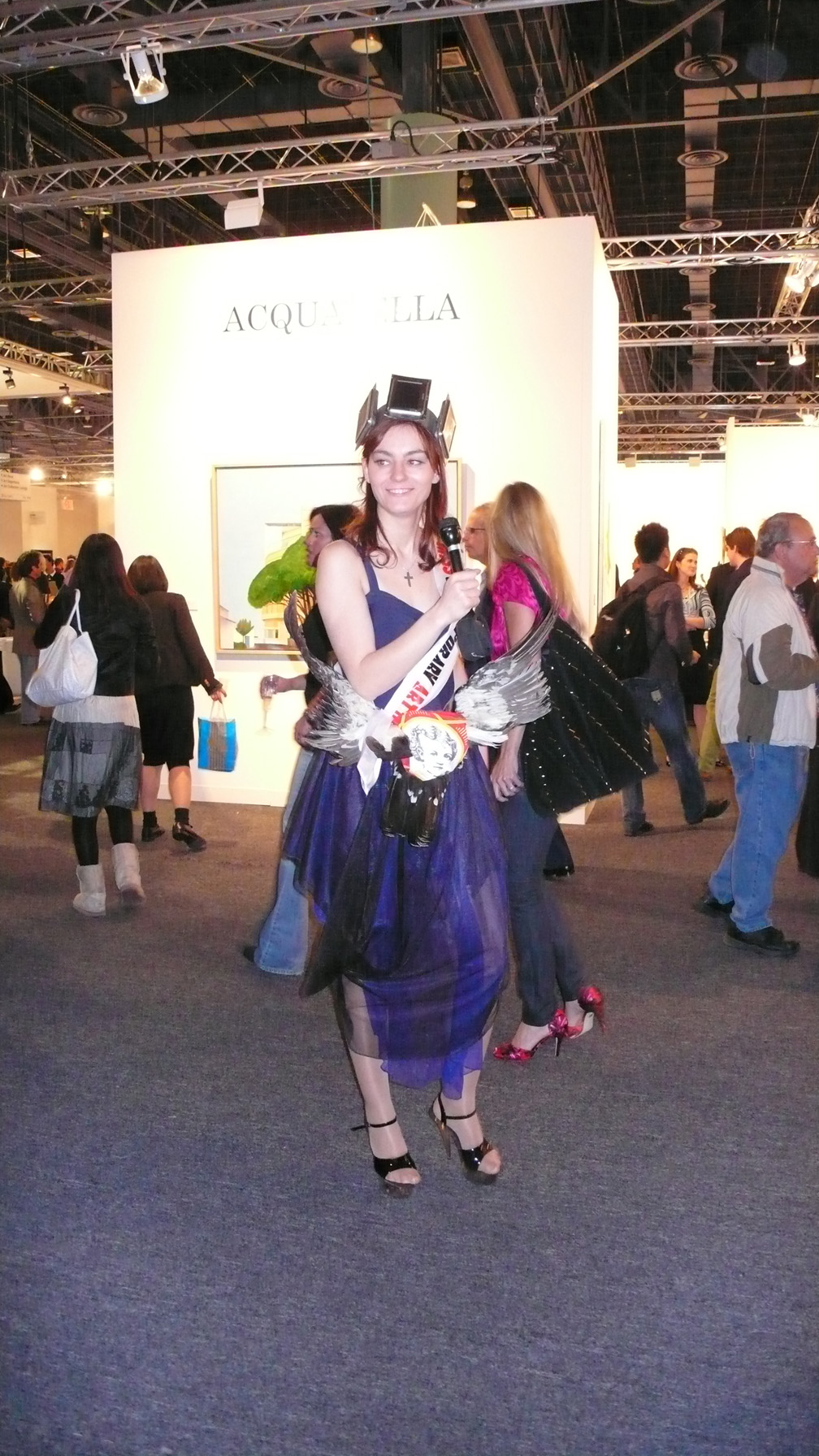
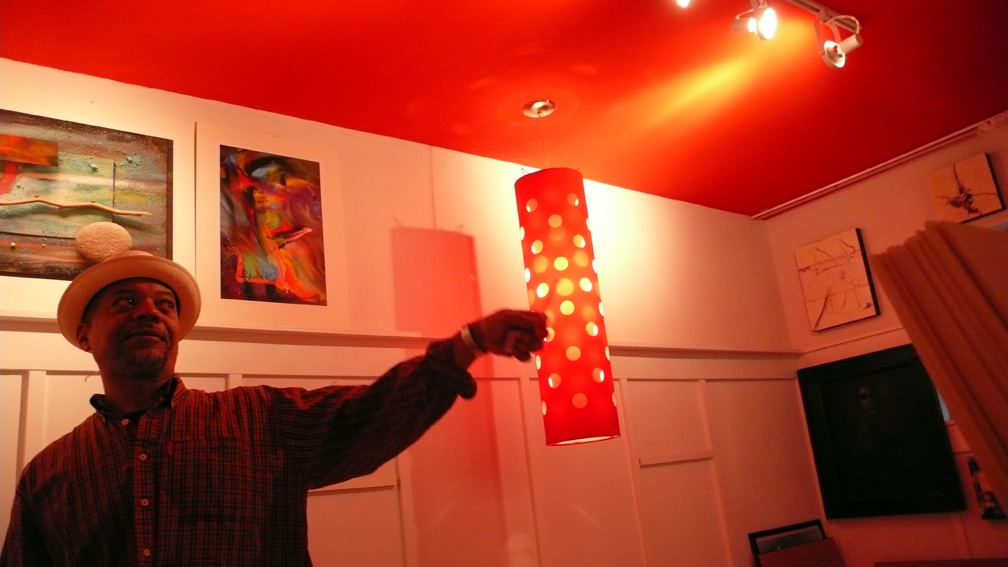
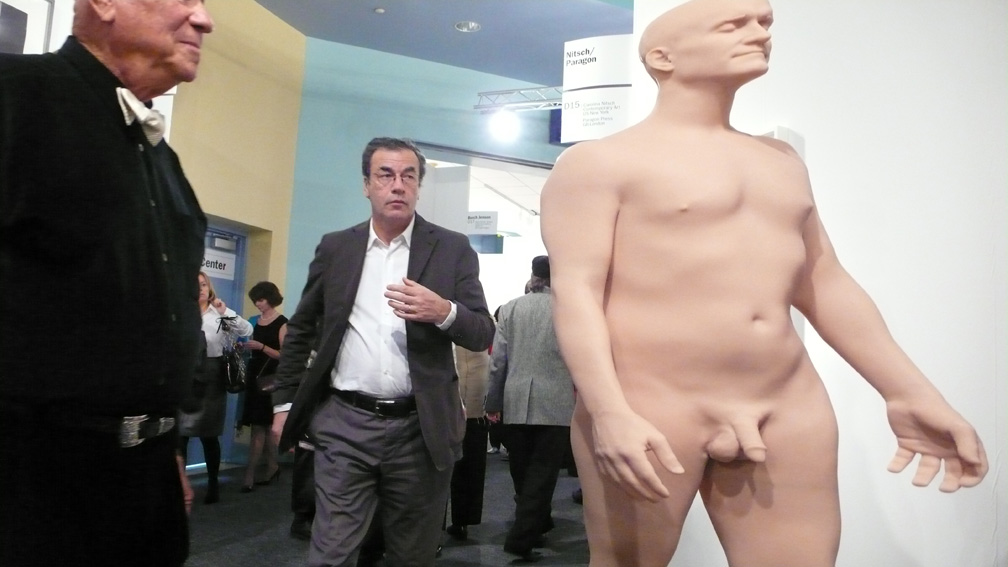

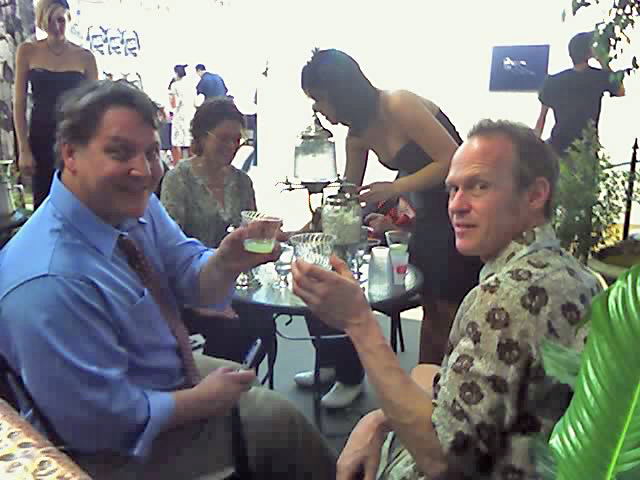
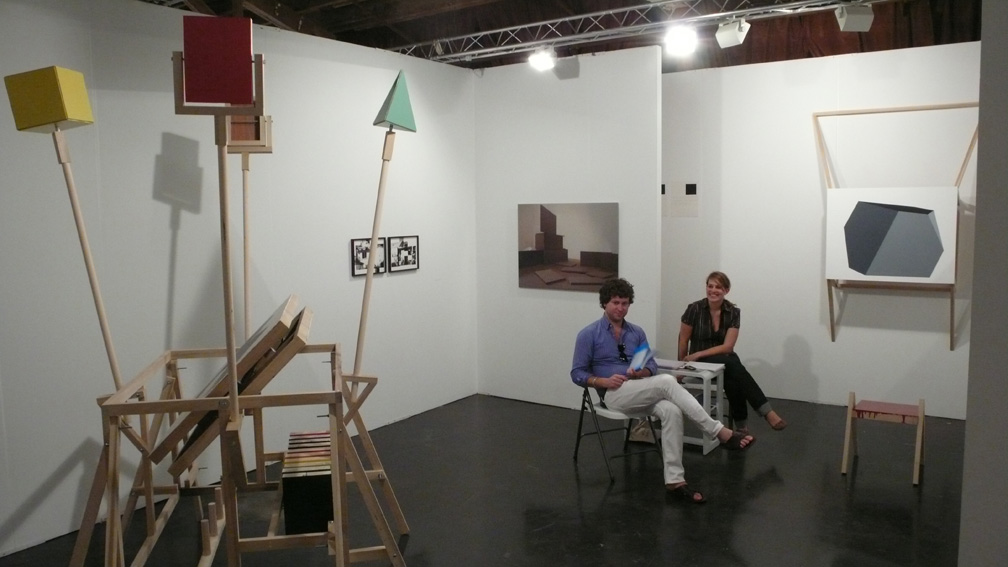
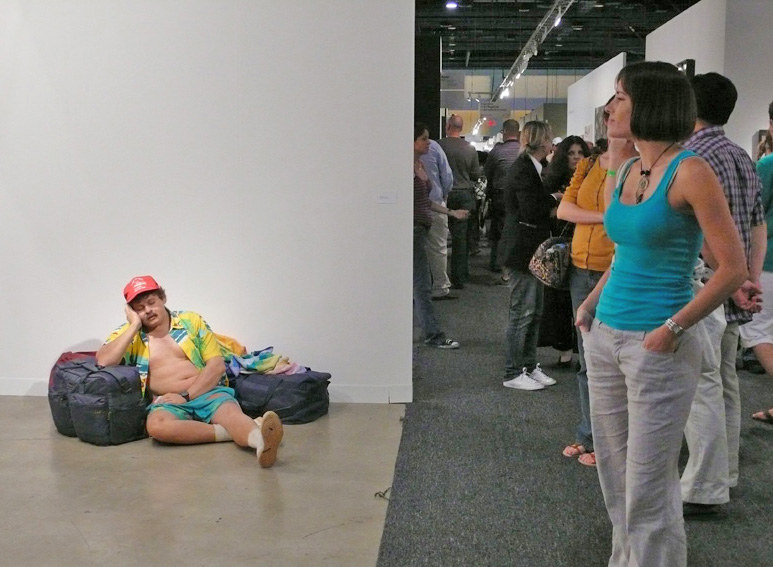

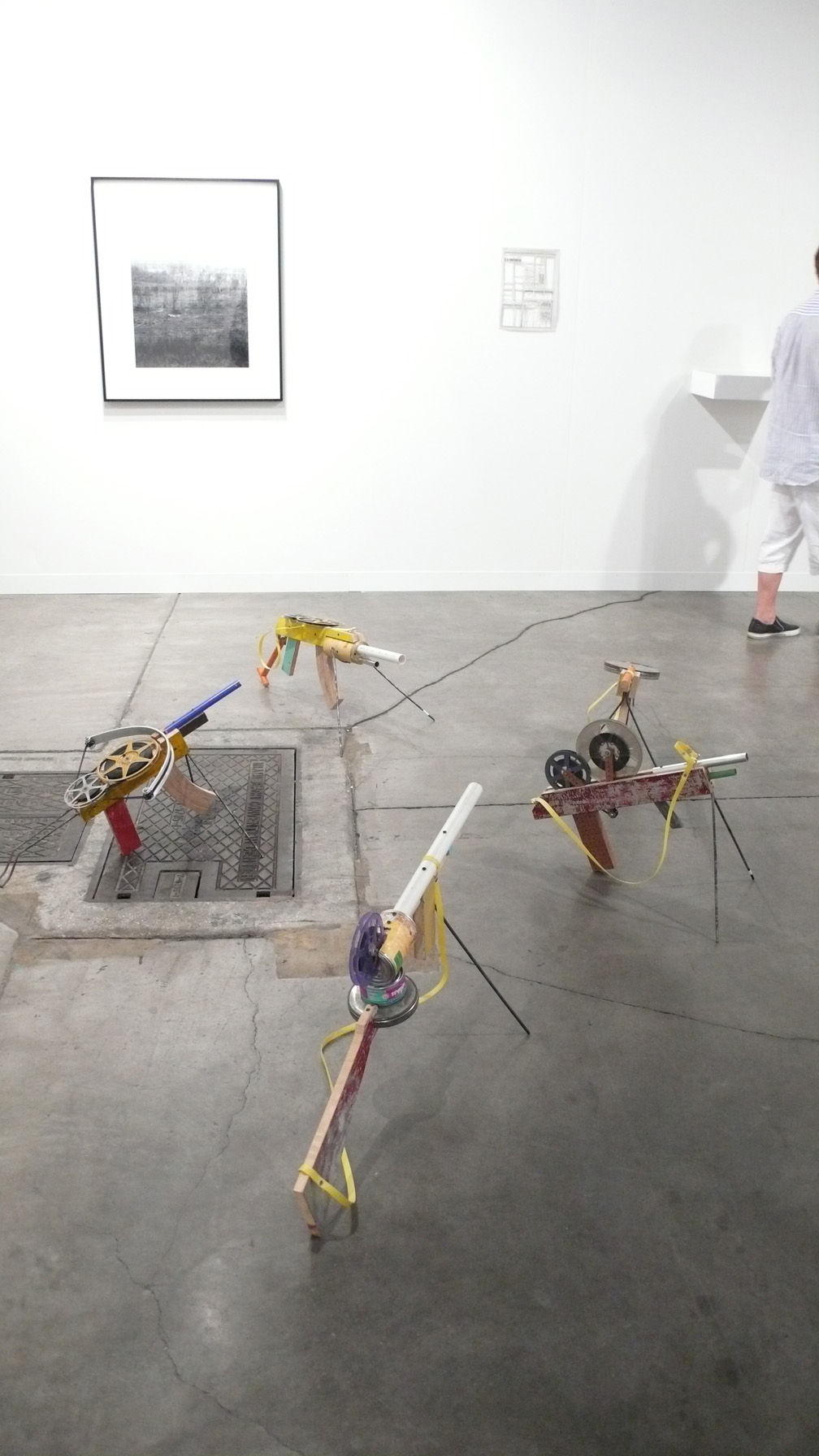
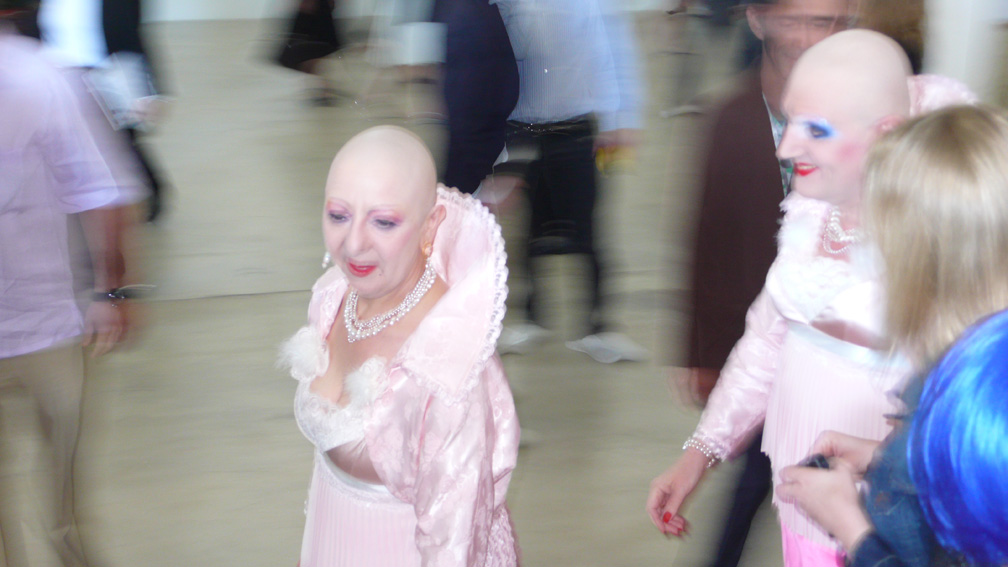
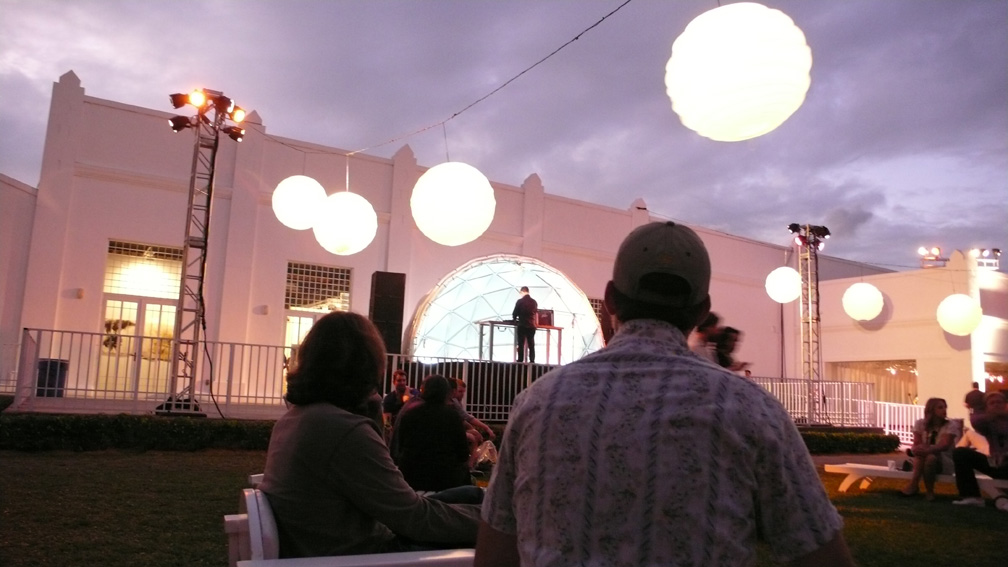
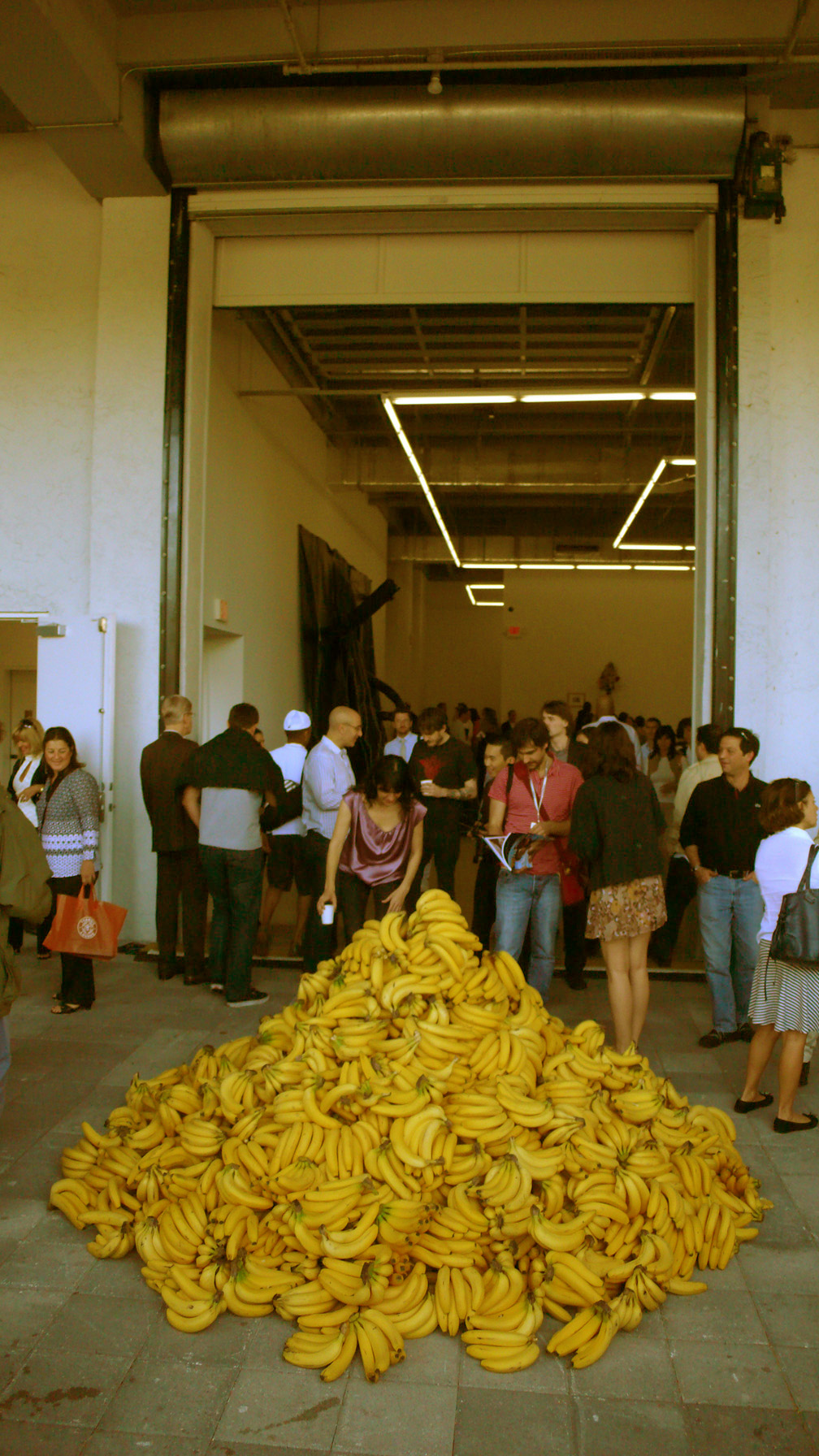
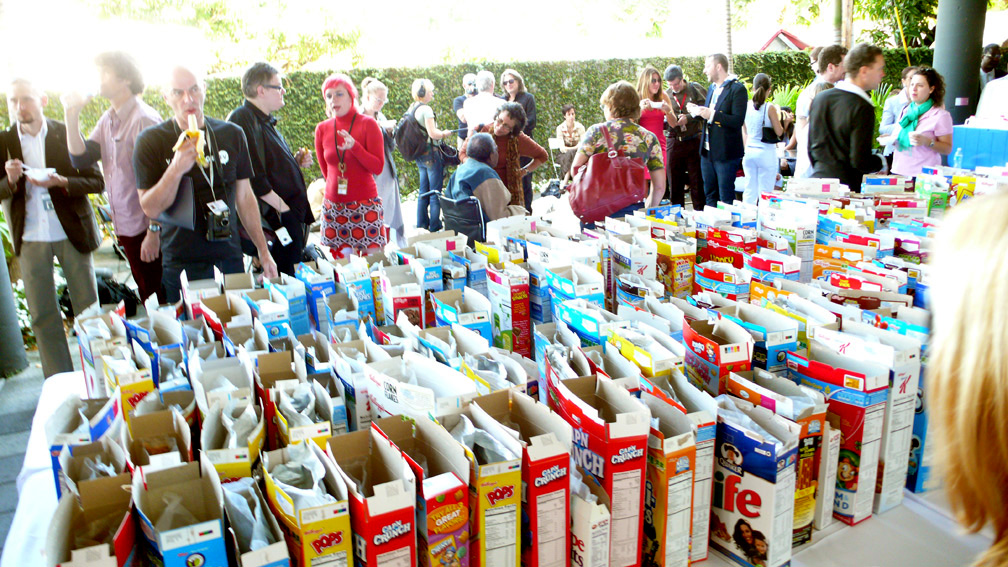
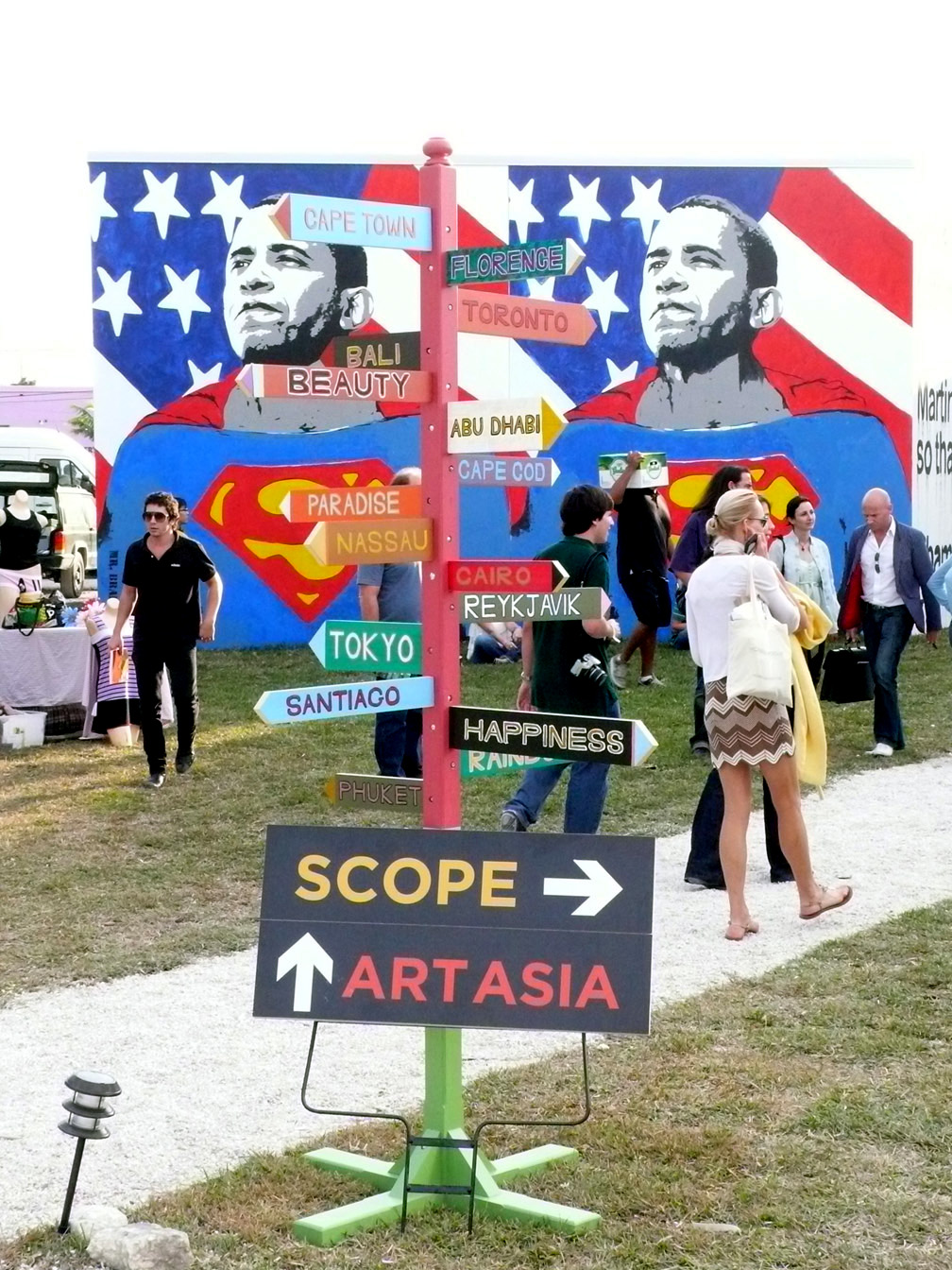
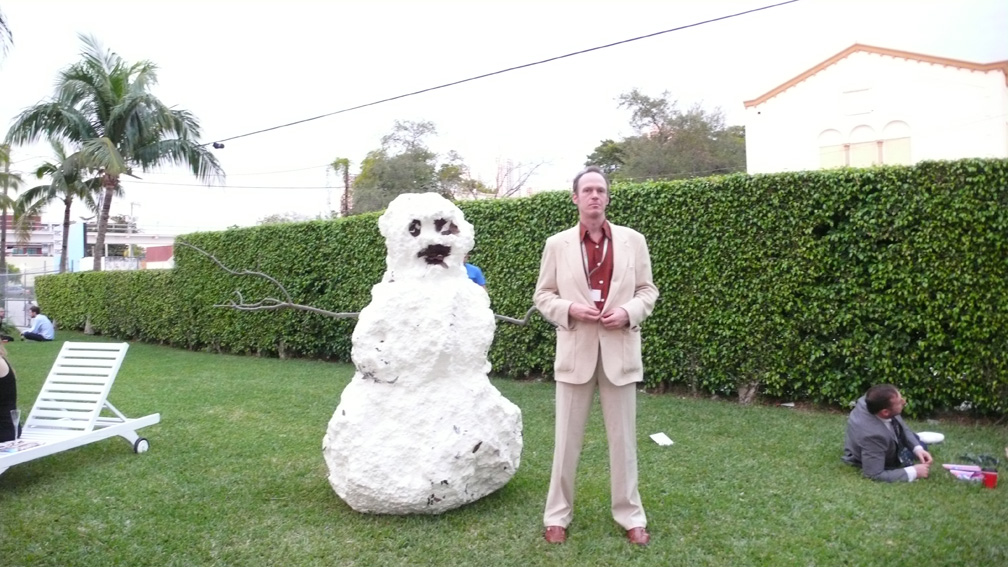
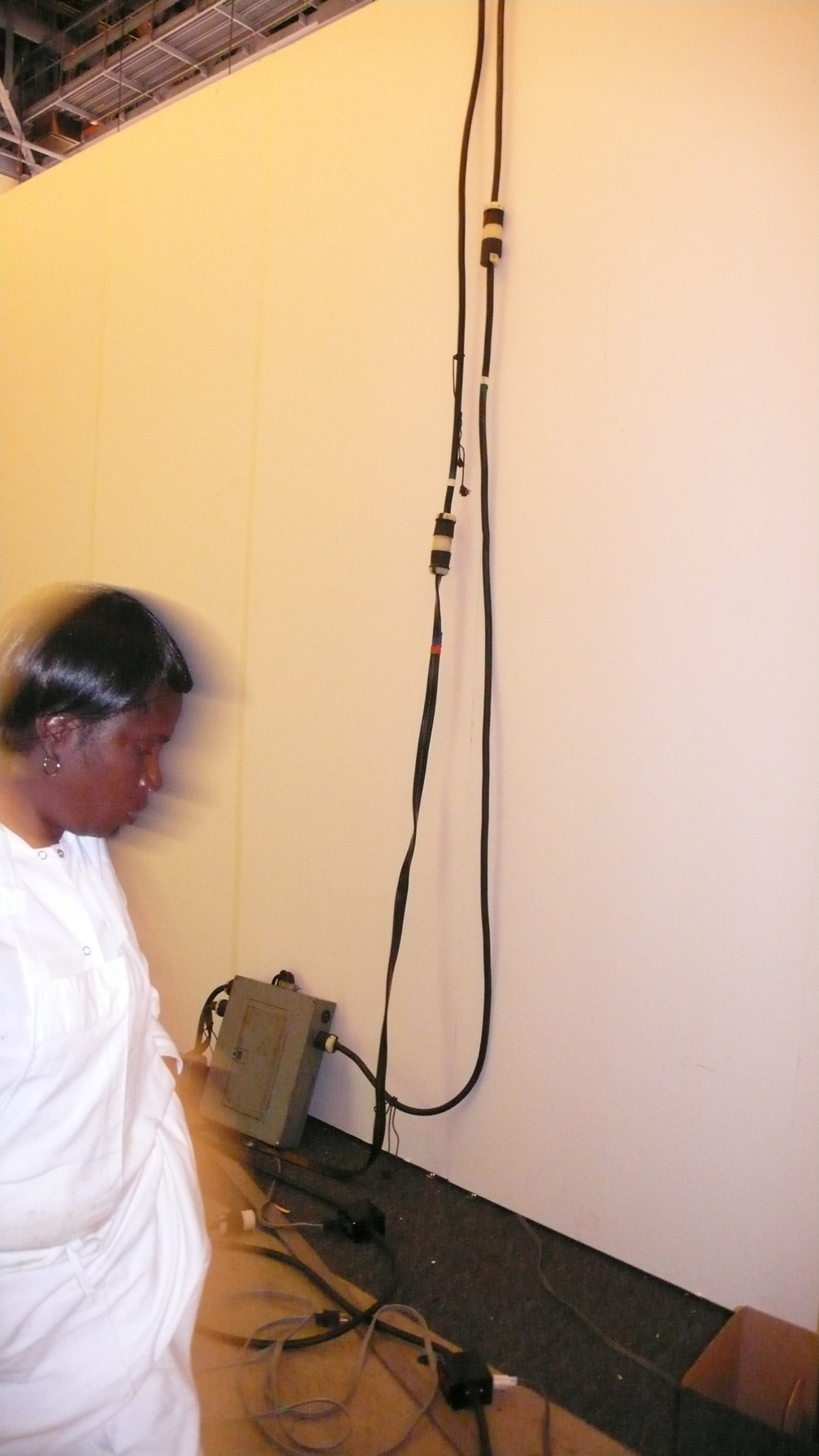
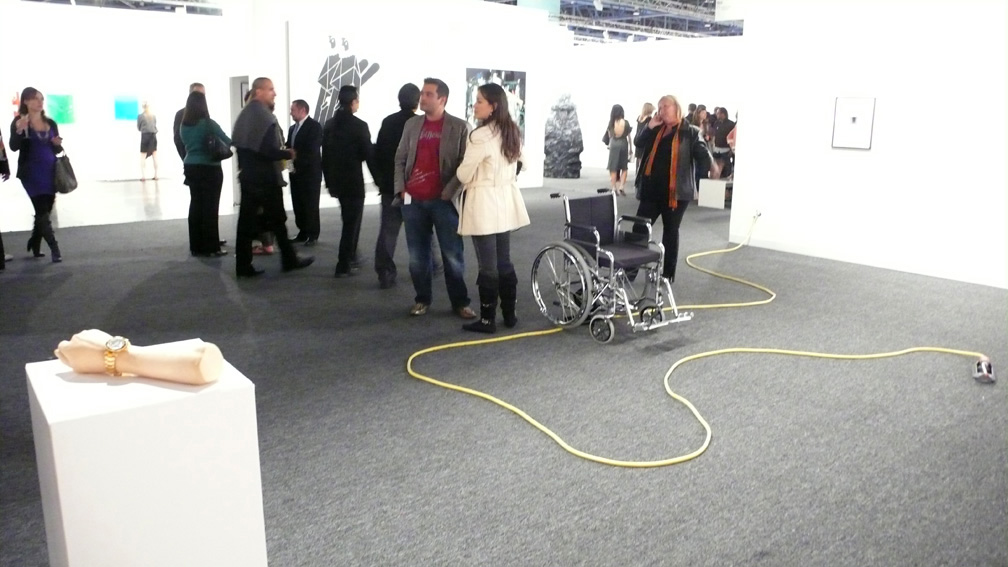
Prelimbo, or: We were just outside of Basel when we heard the retiree death metal band
Art Basel is the largest, most prestigious international art fair in the country (at least according to their press materials). Originating in Switzerland, this festival takes place once a year in South Beach, Miami, FL and attracts the sort of speculators and culturistas that, at least until this recession, have kept the art market super-charged. Iggy Pop’s performance on the beach last year was perhaps synecdoche for the drugless (?) transcendence brought on by the festival’s four days of non-stop art, parties, and attendant fairs (SCOPE, PULSE, NADA, etc.). This article is but the tip of my iceberg to it.
A Motley Crew
Fate, in the form of Peter Van Brabson, brought me to Bridge Fair, one of the many satellite events to Art Basel. Newly returned to the Twin Cities by the way of Indiana, Chicago, and Miami, Peter has established his Van Brabson Gallery in south Minneapolis, where he shows work from an eclectic mix of artists. Here to study at the Humphrey Institute, Peter’s mind is on the global network. Laid back, amiable and generally sporting a Bluetooth in one ear, he broadcasts a sartorial, telescoping confidence. From our first meeting last May I knew I could follow him into the maw of the crazed charms of the ultra rich and chic. We would lounge on Dali’s gold throne in Madonna’s (former) Delano Hotel, sipping $50 martinis and counting the hours until our checks cleared. At least that’s what I hoped.
The only thing I knew for sure, however, was that his ten artists would be crammed into an “exhibition space” at Bridge Fair, each of us paying $500 (plus shipping) for the privilege of showing in the 10 x 18-ft room at the Catalina Hotel. Peter’s show would be just one of the dozens like it, hailing from around the country and the world, each exhibition vying to pimp their bling to whomsoever Hiltons and Halbreichs should enter their lairs.
What would attract who, among the pieces in the Van Brabson Gallery’s show was any artist’s gamble. Would it be the tricky semi-abstract paintings of Gregory Rose, a dread-locked Inver Hills Community College art teacher; or maybe the trad nudes and macro pastel photography of John Eric Hawkins, a friend of PVB’s from Indiana? Or, would the stand-outs be Rebecca Lawson’s black and white identity themed travelography; Samuel Bjorgum’s pulpy magic eye oil-painting abstractions; Bonnie Van B’s fair use cut-up videos; Kyle Fokken’s animalistic war-toy sculptures; Dave Monson’s primitivist pastels; Nic Harper’s goth black-from-the-tube portraits; the acid-on-metal angels of Brian Mark; or my own photo-based endeavours? Read on…
MIAMI, DAY 1
20 degrees in MSP, 70 in MIA. I arrive and split a cab with an artist simply known as “O.” She is Chinese and not showing down here, but her NYC gallery invited her to come anyway. She shoots “teens in transition” in her homeland and just went digital. I give her my postcard, the one picturing a bicycle with a sail and poem in Chinese, and she gives me a VIP pass to the opening at Basel tonight—redundant because of my press pass, but good insurance. I hit my six-to-a-room, $29-a-night hostel, shower, and change into my Miami uniform (white suit, what else?). Then, I walk up to Bridge Fair at the Catalina hotel nine blocks away. I give Peter the two portfolios that I’ve brought and some more bicycle postcards. He is painting pedestals, and the 10 x 18-ft room is so crowded, I have no idea how it can possibly be ready in time for the pre-show tonight.
I go to look for food and drink down the pageant of silicone-enriched, semi-clad humanity that is Lincoln Road. Starving artists splay their works in the meridians alongside a crew of yoga exhibitionists. Even though I promised myself the first thing I’d do is swim, I am too excited to even go the two blocks to the ocean; I’m wanting to be on my best nerves for Basel. I read in The Daily Art News that attendance is down 30% this year because of the economy. (There’s similar coverage in The Miami Herald.)
As I read the paper, I overhear this conversation:
“I’m doing a 20-ft painting of an octopus fighting a squid.”
“That’s a lot of paint.”
I return to the gallery after a slice of pizza and glass of white, and, voila: the show looks good and ultra tight—every square inch is used, although not the bathroom, as had been threatened. Instead, that’s where they’re keeping the shipping crates. The giant No-Pest strip lamp has been swung up and tethered to the ceiling, which has been painted a murderous Eggleston red. I suggest that perhaps a Cuban Santeria chicken gut augury is in order, to view our fates and that of the fair.
I head to Basel for the grand opening from 5-8.
The convention center is a clustered throng of human krill, surging without reprieve. Jay- Z, Beyoncé and the other VIPs have already had their private tours. Patrons are vacuumed past the spaceship-like entrance of Art Basel and into its 250+ gallery cubicles maw: the last aesthetic outpost before the Recession Nebulae. Basel consumes a square footage roughly equal to four large city blocks, not counting the extra wings for emerging and younger galleries; as I wend my way through the space, the booths whirl by in incomprehensible configurations. I try to take it all in, hoping to catch a Pomo ray-gun bolt of lightning from an undiscovered. This does not and, perhaps in this context, cannot happen.
_________________________________________________
I do my best to find solace and not just cheap irony as I watch someone take a tape measure to a Botero. If old sausage-torso can sell, maybe things really are recession-proof down here.
_________________________________________________
Works are being sized up for immediate sale and placement. I do my best to find solace and not just cheap irony as I watch someone take a tape measure to a Botero. If old sausage-torso can sell, maybe things really are recession-proof down here. Pop and coffee: $4 a cup, champagne is $14. Another patron looks at a Charles Demuth; “Incredible, simply amazing!” he enthuses. I sense a blue chip special in aisle three. And then a welcome little zap: Richard Dupont’s rubber, life-sized, stretched nude sculpture is an aisle stopper, bemusing the mob who want to pass, but don’t dare to touch it. A nearby installation of a wheel-chair sitting on a sprinkler hose; however, is not so electrifying. (For comparison’s sake, I have included an “installation” shot of extension cords and power boxes on the way to the bathroom.)
There are a few, but not enough, deputized performance patrons. Some wear hard hats that read “My Love” in French; an allusion to Hiroshima Mon Amour, perhaps, signaling that the sky is falling, as if we didn’t know. I see a reporter with PDA crown, wings and a Miss Contemporary Art sash, but she won’t pose for me. It’s just the first night, and already the information overload has begun.
I go to the media center for free coffee. On the way out, I see that one of the next events at the Miami Convention Center is the Giant Home Foreclosure Auction: the logical follow up to Basel’s fate? The night is far from over, however, it is only a little past eight o’clock, and I’ve heard that the Art Positions shipping container galleries near the beach are going at full tilt. Fortunately there is a bar on the way…
MIAMI, DAY 2
Up at 8 am, I shower (despite the fact that the ocean is four blocks away and warm); get some black-as-hell Haitian coffee and stroll up Washington to find something to eat. It turns out to be a not-so-cheap, merely adequate breakfast. (I later learn that the best and cheapest breakfasts are on Ocean Drive.) I put in a call to a certain friend: Mr. Herman Milligan, who—being a V.I.P. member of the Walker, on the board of the Soap Factory and an Art Basel veteran—knows the scene and its grooves right well.
This morning’s imperative is to get to the Rubell Family Collection before second breakfast is over. I meet up with fellow exhibitor Samuel B. and we both head for one of the many free shuttles going from the convention center to Wynwood on the mainland. It is here that we hook up with Herman and go into the fantastic RFC. As we enter, we see an entire room of Robert Colescott on our left and many conceptual pieces on our right. We plow past the artwork, however, to our immediate goal: the six-foot-high pile of bananas and tables laden with 100 or so boxes of breakfast cereals, milk jugs, and dozens of coffee makers. Sated, we linger for a moment to gawk at the media attention following bald hermaphrodite twins Eva and Adele. Later, I am documented (at the very end, after the fade-to-black) along with the entire exhibition, by the excellent Vernissage TV.
The Rubell Family Collection exhibit, 30 Americans (which is actually 31), is potent in its breadth and depth. All are African-American artists; many of those included, like Kara Walker and Glenn Ligon, we’ve seen shown the Walker over the years. But this collection, taps a range of consciousness in African-American art, such as Nick Cave’s Sound Suits and Mark Bradford’s and Wangechi Mutu’s collages that Minnesota has yet to experience. As its power inversions culminate into kaleidoscopes of issues and aesthetics, the dovetailing between artists’ works moves from fugue to dominant paradigm shift. 30 Americans will travel to Africa after showing here and, as a collection, it has such pure artistic force that I suspect its cultural impact will be much larger than the collection’s modest scale—more like that of a major museum than a traveling exhibition.
Overheard from a conversation between some nearby dealers: “The artists are the weakest links in the chain, because they’re hungry.”
MIAMI, DAY 3
Heading toward the shuttle again this morning, Kyle Fokken steps out from a bus and motions me over to him. We hook up for SCOPE “Miami’s original emerging contemporary art fair” and are not disappointed by its name nor its claim. Near the front doors, Fernando Mastrangelo’s massive Aztec Sun Stone, Avarice, greets us, as if demanding human sacrifice. The piece is both a comment on subsidized agricultural overproduction and a grim reminder that the end of the world (according to the Aztecs) is coming soon: 2012! I’m touring with Kyle, a former salesman, so the schmooze is on. Introducing ourselves to galleries that seem aesthetically sympathetic to our causes, we pass out cards and get as good as we give, then split off to enjoy the visions on our own for a bit.
SCOPE is adjoined to ART ASIA, and between them there are some 135 exhibitors from 36 countries—seeing them all is a daunting task, but one made easier by the presence of a Pernod-sponsored absinthe bar.
_________________________________________________
Cliff Evans’The Road to Mount Weather, the must-see piece of the fair, is a three-screen animated photomontage where demon politicos mingle with nubile goddesses, while missiles are launched beside suburban lawns and cowboys ride steaks. _________________________________________________
With the green fairy as my tour guide, I realize that SCOPE Fair is truly the circle of life fair, for on the other end of the massive tent is Friends With You’s moon-walk funhouse: a natural happy, happy, joy, joy, kid-filled counterpart to the Sun Stone’s implicit threat at the entrance. The funhouse is ensconced among reasonably priced, toy-like effigies for maximum distribution of joy. Behind a black curtain facing all this is the must see piece of the fair, Cliff Evan’s The Road to Mount Weather, a three-screen animated photomontage where demon politicos mingle with nubile goddesses, while missiles are launched beside suburban lawns and cowboys ride steaks. It’s like a Rosetta stone decoding our society’s mythos, an X-Ray of the Yin/Yang forces at work in American culture.
Further up the aisle, though not quite in the flesh, former homegirl and Minnesota-artist starting-to-make-it-big, Mickey Smith is showing her giant book-spine photographs at the Invisible-Exports gallery. A few more steps back towards the door, I spy forbiddingly political art from the Priska Juschka gallery; and am blown away when Ms. Juschka tells me how much she loved my review of artist Jade Townsend’s show at Minneapolis’s Art of This gallery. The circle is complete.
MIAMI, DAY 4
Wake up tired and automatically get on a circulating shuttle before I realize I still need to check my mail and register for Art War, a splatball battle with art prizes, which is being held at the Raleigh hotel. (I am thinking it would have been even better if they’d held it there the night before, during the Vanity Fair party.)
As if by magic, I run into Herman Milligan. Together, we find the perfect cure for fatigue: a leisurely three-Mimosa brunch in the UBS collector’s lounge—the best food I’ve had in Miami. Replenished, we walk into the adjacent Basel exhibition floor, which is almost as crowded as it was on opening night. Here we split up, as I’m determined to talk to gallerists about their artists, sales, aesthetics, and trends.
First, I speak with LA gallerist Susan Vielmetter. She is a realist: she says the outlook is bleak, attendance is down. She shrugs, recounting that it could be a good thing that her artist, Edgar Arcenaux, is not here for the show, but in London, being courted by another gallery. Her sentiments are echoed by the Art Newspaper, the official daily newspaper of Art Basel; their peppy and optimistic coverage doesn’t whitewash the depressing stats. Arcenaux’s work seems to echo the news of the economy in general: it’s a dirty, grey, car culture, looking for an alchemical fix to its problems.
A series of homemade toy machine guns which “shoot” film attracts my attention next, in a cargo-cult way. I speak with Florian Seedorf, of Zurich’s Peter Kilchmann gallery, about them. The guns are part of an installation by Belgian ex-pat artist Francis Alys. As far as blue-chip artists go, he is an engaging political and cultural figure whose work examines power and perception. One of his videos shows him, first, purchasing a gun and walking the streets of Mexico City until he is arrested; then he is shown reenacting the whole scenario again, the second time with police cooperation. Both sequences, presented together this way, blur the divisions between the real and the mediated. The distinctions between them sharply underline truths about existing power structures and individual rights. Alys’s machine gun piece turns out to be a reflection on the rise of mob justice and rash of hangings in South America in recent years, a consequence of government ineptitude and corruption of local officials. Alys’s guns start at $25K, which could probably fund a fair bit of frontier justice. Florian has no comment about sales.
I am then drawn to the transparent spray paintings of Maja Vukoje, represented by the Martin Janda Gallery out of Vienna. This Hungarian-born, Vienna-based artist obsessively uses African juju imagery in her work. Tired of the economic question, I ask gallerist Elisabeth Konrath instead about the artist’s willful (and to my mind, very European) pursuit of the other. We chat about this for a brief time, until she mentions that the gallery also represents Roman Signer, who has just shown at the Rochester Art Center. I interject to tell her that just this fall, I had been down there with pyro-performance artist Steve Rife to burn a ping-pong ball laden birthday cake for Mr. Signer’s 70th. Despite the fact that Karl Rove was speaking at a Republican rally next door, our fiery celebration went off without a hitch. No matter the dire economy, slumping art sales or psycho-colonial overtones of some artwork—it is a beautiful and strange 6th degree of separation to discover that Vienna and Rochester are united in happy birthday wishes!
MIAMI DAY 5, THE LAST DAY
Conventional wisdom has it that most sales are made on the first or last days of the fair. Today, everyone at Bridge Fair, where my work is being shown, has their fingers crossed. Given the rate of sales thus far, however, I don’t feel like hanging at the Catalina and, instead, hop the shuttle over to NADA (the New Art Dealers’ Alliance Fair). Here I very much enjoy the experience of winter at one remove: lounging in a hammock under a palm, drinking a beer, and Tony Tasset’s snowman standing incongruously on the nearby grass. Appropriately, this is when my girlfriend calls from Minneapolis: it has snowed, my car won’t start and she’s worried about the tow trucks. While she talks about snow, the dead car, the tow… I am listening to the ambient textures and harsh vocals of Prurient’s performance in the background, soaking in the Florida sun, and finding all other concerns somehow intangible.
While at NADA I also find ‘zines, mags, T’s, and people talking about our own local treasures—the excellent ARP! (full disclosure: I write for them, too) and Midway Contemporary Art. I just about decide that I like NADA fair best, and yet it also gives me doubts. I stop to chat with the Canada gallery’s Wallace Whitney as he relaxes in his folding chair in the middle of newspapers covering the walls (one piece), a crudely painted Superman “S” hanging on them (another) and several sculptures made of string and confetti. The kind of marginal/critical art I term “abject expressionism™”. A deliberate counterpunch to Basel, perhaps, it transforms me/it transforms me not, in a didactic dumpster-diving way. Up the row from Canada Gallery, Berliners Klemm’s offers the work of Israeli artist Alon Levin. His work is the perfect metaphor for what my brain feels like after days of looking at thousands of different works: a (Rubik’s) crib-like structure adorned with simple blocks of color and adjustable paintings that flip with an eagle on one side and mountain on the other. Seemingly his works are a commentary on the nature of information overload and the necessity of getting back to basics.
In context of the last, overloaded day of the festival, what I see at NADA seems to point to the abstract, almost faceless endeavors of its Pomo artists. The Poles look like the Germans look like the Los Angelenos. Unnerving and enlightening, the theory-laden works bring the split between my thought-maker and my exhausted optics closer to two little zeroes.
I head back to Bridge Fair to discover nothing has sold. Would that I’d played the Vegas odds on it!
Art Basel Miami, despite the loathsome hydra head of recession bearing down on it (and us), remains an empowering and connective experience for any artist. And, if you buy me some absinthe, I’ll be happy to tell you more.
_________________________________________________
About the author: Sean Smuda is an artist, photographer, curator of the Shoebox Gallery and VACUM member.